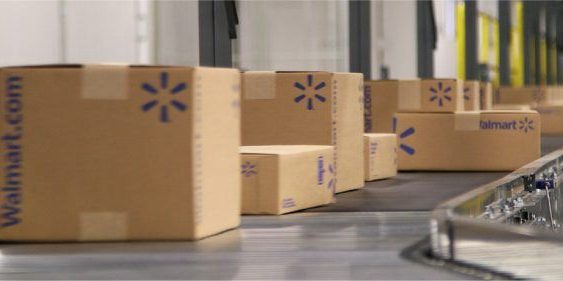E-commerce pushes transportation industry toward same-day delivery, unheard of 10 years ago
by January 16, 2018 11:52 am 657 views

E-commerce sales have nearly doubled in the past five years to $450 billion, accounting for 8.4% of all retail sales, and the rise has significantly impacted the supply chain as online retailer Amazon puts pressure on competitors to offer same-day delivery, transportation consultants said.
Principal Steve Fox and managing partner Lee Clair, both of Transportation and Logistics Advisors, discussed the e-commerce impact on the transportation industry in a recent conference call hosted by transportation analyst David Ross of Stifel.
Amazon is the largest e-commerce retailer, twice as big as the next nine companies combined and growing at a faster rate than the overall market, Fox said. But other companies, such as Wal-Mart Stores, Target and IKEA, have made strides through acquisitions of e-commerce companies and free shipping offers. Also, carriers such as UPS have invested into same-day delivery, with its acquisition of Deliv.
Within five years, e-commerce is expected to account for 17% of the retail sector, according to John Larkin, transportation analyst of Stifel. In 10 years, it’s expected to comprise 20%.
“The dominant, brick and mortar store-based distribution model is gradually being replaced by a less forgiving e-commerce-based fulfillment model that provides less buffer inventory, that requires faster transit times and that demands more precise pick-up and delivery times.”
E-commerce has led to changes for which companies struggle to prepare. Compared to in-store purchases, the volume of customer returns are higher, Fox said. Returns for in-store purchases run in the low-single digits, but 20% to 30% of apparel purchased online is returned. Also, e-commerce shipments are more focused on the individual items, instead of pallets of items, and many existing inventory management systems don’t support working at this level. Companies that have one fulfillment center will face higher outbound shipping costs and increased transit time but less inventory to manage than with multiple distribution centers.
Other options are to use stores or warehouses as fulfillment centers or have the distributor ship items directly to the consumer, known as dropship. Fox said one way to handle the complexity is to outsource it to third-party logistics company.
“There’s a range of companies that provide that service today.”
A decade ago, same-day delivery wasn’t a part of the transportation concept, Fox said. But Amazon continues to push for same-day delivery, offering same-day free shipping in 8,000 towns and cities, and competitors will struggle to offer that. Amazon is building its local delivery fulfillment network and has started offering Sunday deliveries. Also, Amazon has developed its own transportation capabilities, essentially operating as a third-party logistics provider as items for other e-commerce retailers ship from Amazon distribution centers, Clair said.
Carriers are changing their pricing to more accurately charge for e-commerce freight. Carriers such as ABF Freight, a subsidiary of Fort Smith-based ArcBest, recently introduced dimensional pricing, which accounts for bulky, light weight packages. Previously, packages were based on weight, allowing lightweight, large packages to ship inexpensively. Carriers UPS and FedEx also used this method of pricing for shipping. Fox expects dimensional pricing to lead shippers to better match the product size to the package size. Dimensional pricing will continue to increase the cost of light items, Clair said.
Supply chain costs for brick-and-mortar retailers account for about 21%-23% of sales, or about three times the cost of the stores themselves, Clair said. Supply chain costs for e-commerce retailers account for 25% to 30% of sales.
Outbound and final mile shipments are higher for e-commerce retailers, and 10 times the cost of less than truckload or truckload shipping costs to stores. Freight costs about 3 cents for per pound for a 40,000 pound truckload shipment, and three to four times more for a large less than truckload shipment. Costs per pound continue to rise as the shipments become smaller. A two to five pound package is $1.74 per pound to ship.
Brick-and-mortar retailers with multiple distribution centers will continue to require truckload shipments, but e-commerce is shifting business from truckload and toward less than truckload carriers, Clair said. However, it’s expected to have minimal impact on truckload carriers as the industry hauls more freight than LTL carriers. Also, intermodal is expected to be negatively impacted by e-commerce as the fragmented volume is expected to move from intermodal hubs. Intermodal is expected to grow, but e-commerce is a headwind for its growth.
